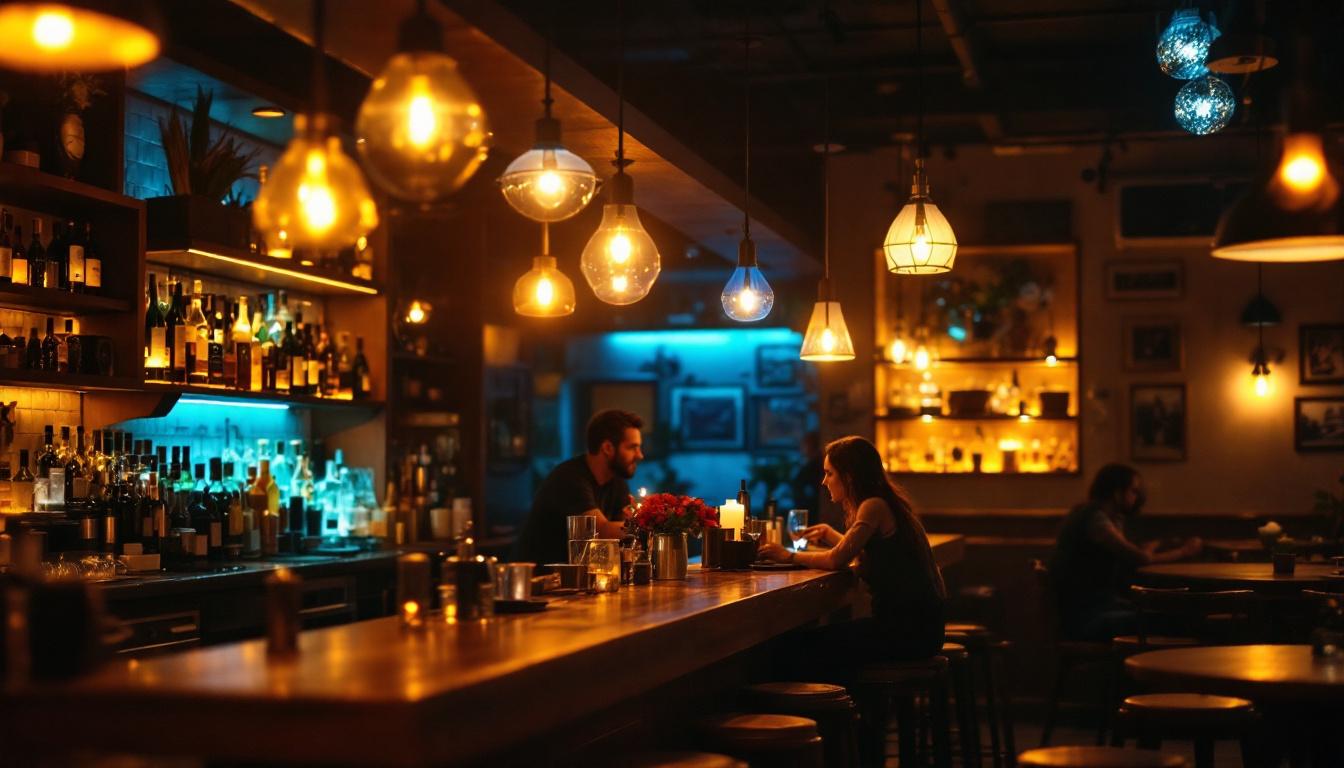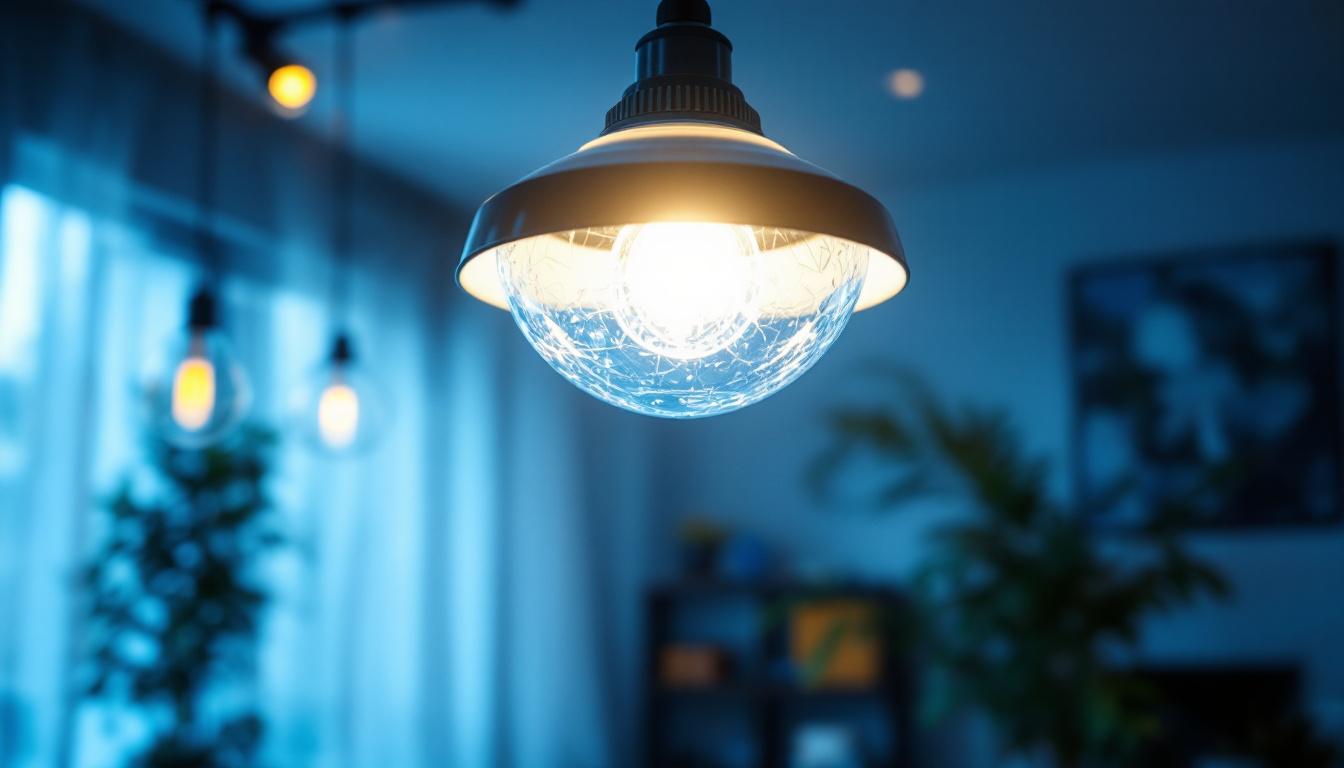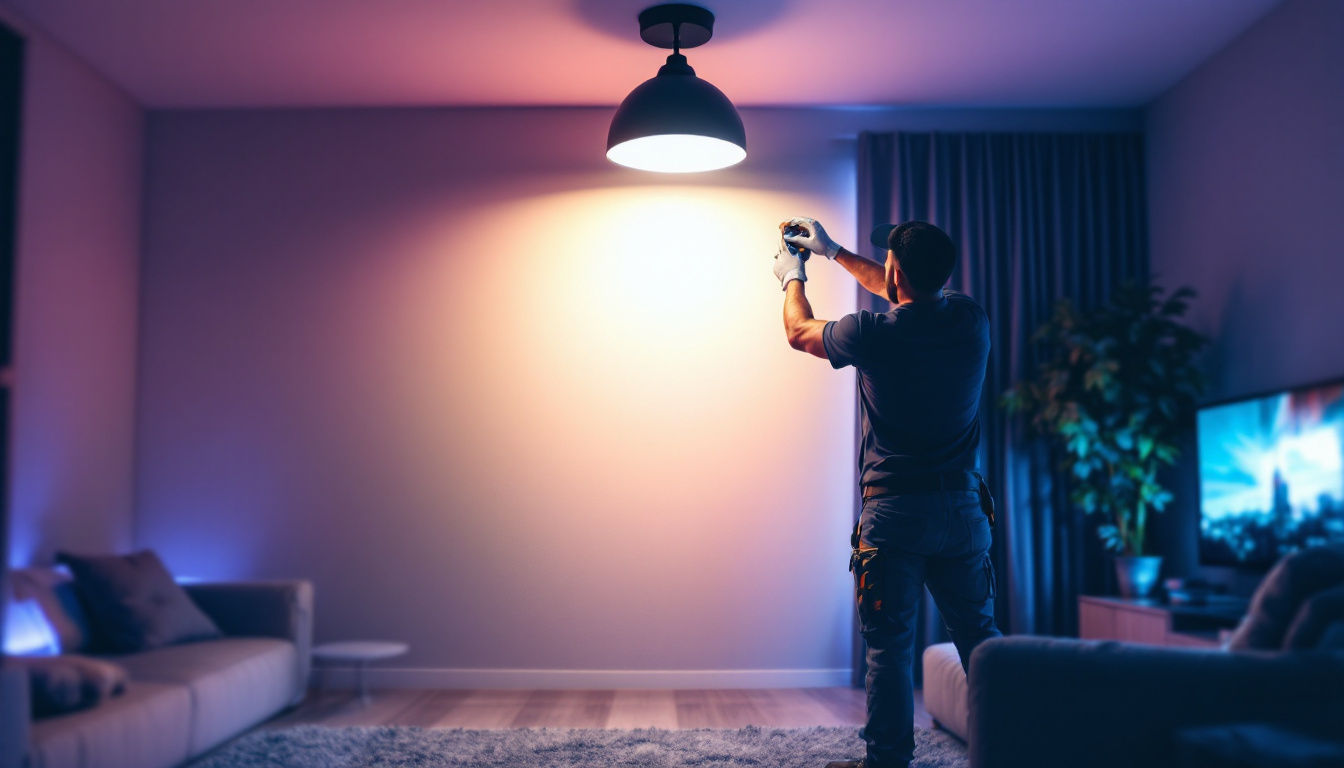
In the world of hospitality, the ambiance created by lighting can significantly influence customer experience. When it comes to bars, the right lighting design can enhance the atmosphere, attract patrons, and even impact sales. As a lighting contractor, understanding what clients expect from you in terms of bar lighting is crucial for delivering exceptional results. This article delves into the essential aspects of bar lighting that contractors should be well-versed in to meet and exceed client expectations.
Lighting is not merely a functional element in a bar; it serves as a key design component that shapes the overall aesthetic and mood. Clients often look for lighting solutions that not only illuminate the space but also enhance its character. This requires a deep understanding of how different lighting styles can influence the atmosphere.
Ambiance is a critical factor in a bar’s success. It sets the tone for the entire experience, affecting how patrons feel and interact within the space. Whether a bar aims for a cozy, intimate vibe or a vibrant, energetic atmosphere, lighting plays a pivotal role in achieving these goals. Understanding the psychological effects of light can help contractors suggest the most appropriate lighting solutions.
For instance, warm lighting can create a welcoming and relaxed environment, ideal for patrons looking to unwind after a long day. In contrast, brighter, cooler lighting can energize a space, making it more suitable for a lively nightlife scene. Recognizing these nuances allows contractors to tailor their designs to fit the specific vision of their clients.
Moreover, the color temperature of the lighting can significantly impact the mood. Soft yellows and oranges can evoke feelings of comfort and relaxation, while cooler tones can stimulate conversation and excitement. This understanding of color psychology is essential for bar designers who wish to create a memorable experience that resonates with their clientele. Additionally, seasonal changes may prompt shifts in lighting strategies, as bars may want to adopt warmer tones during winter to create a snug atmosphere and cooler tones in summer to reflect a more refreshing vibe.
Another important aspect of bar lighting is the ability to highlight key features within the space. Whether it’s a beautiful bar top, unique artwork, or an impressive selection of spirits, effective lighting can draw attention to these elements, enhancing the overall appeal of the bar. Clients often expect contractors to provide creative solutions for accent lighting that not only showcases these features but also complements the overall design.
Using techniques such as spotlights, wall washers, or backlighting can create focal points that elevate the aesthetic of the bar. Contractors should be prepared to discuss various options with clients, demonstrating how different lighting techniques can transform the space. For example, pendant lights hanging over a bar can create a sense of intimacy while also providing functional illumination for bartenders. Additionally, LED strips can be used to outline shelves or highlight the contours of architectural features, adding depth and dimension to the design. Such thoughtful integration of lighting not only enhances the visual appeal but also encourages patrons to explore and engage with the bar’s unique offerings.
Furthermore, the placement and intensity of lighting can also influence the flow of movement within the bar. Strategic lighting can guide patrons through the space, drawing them towards certain areas, such as a dance floor or a lounge section. This can be particularly effective in larger venues where creating distinct zones is essential for managing crowd dynamics. Understanding how to manipulate light to create pathways and delineate spaces can significantly enhance the functionality of the bar while maintaining an inviting atmosphere.
When designing lighting for a bar, several types of lighting should be considered. Each type serves a distinct purpose and can be combined to create a harmonious lighting scheme that meets the client’s vision.
Ambient lighting provides the overall illumination of the bar, ensuring that patrons can navigate the space comfortably. It sets the foundation for the lighting design and should be both functional and aesthetically pleasing. Common sources of ambient lighting include ceiling fixtures, chandeliers, and wall sconces.
Contractors should work with clients to determine the appropriate level of ambient light based on the bar’s concept. For example, a cocktail lounge may require softer ambient lighting to create a more intimate setting, while a sports bar may benefit from brighter, more energetic lighting.
Task lighting is essential for areas where specific activities take place, such as the bar counter or tables where patrons may read menus or engage in games. This type of lighting should be bright enough to facilitate these tasks without being harsh or overwhelming.
Examples of task lighting in a bar setting include pendant lights over the bar, under-cabinet lighting for shelves, and focused lighting on tables. Contractors should consider the placement and intensity of task lighting to ensure it effectively serves its purpose while contributing to the overall ambiance.
Accent lighting is used to highlight particular features or areas within the bar, creating visual interest and depth. This type of lighting can transform a space from ordinary to extraordinary by drawing attention to unique design elements.
Common applications of accent lighting include illuminating artwork, highlighting architectural details, or showcasing a premium liquor selection. Contractors should collaborate with clients to identify which features they want to emphasize and recommend suitable accent lighting solutions.
In today’s eco-conscious world, clients increasingly expect lighting contractors to incorporate energy-efficient and sustainable practices into their designs. This not only helps reduce operational costs but also aligns with the values of environmentally aware patrons.
LED lighting has become a popular choice in the hospitality industry due to its energy efficiency and longevity. Unlike traditional incandescent bulbs, LEDs consume significantly less energy and have a much longer lifespan, making them a cost-effective option for bar lighting.
Contractors should be knowledgeable about the various types of LED fixtures available, including dimmable options that can enhance the versatility of a bar’s lighting scheme. Educating clients on the benefits of LED lighting can help them make informed decisions that contribute to sustainability goals.
Smart lighting technology is another innovative solution that clients may seek. This technology allows for greater control over lighting levels, colors, and schedules, enabling bars to create dynamic atmospheres that can change throughout the day or night.
For instance, a bar may opt for brighter, more vibrant lighting during peak hours and softer, warmer tones during quieter times. Contractors should be prepared to discuss the integration of smart lighting systems and how they can enhance the overall experience for patrons.
Lighting contractors must be well-versed in local regulations and safety standards that govern lighting installations in commercial spaces. Clients expect contractors to ensure that their designs comply with all applicable codes, which can vary by location.
Before commencing any lighting project, it is essential to understand the building codes and permits required for the installation. This includes adhering to regulations regarding electrical systems, emergency lighting, and accessibility standards.
Contractors should be proactive in researching these requirements and communicating them to clients. This not only helps avoid potential legal issues but also builds trust and credibility in the contractor-client relationship.
Safety is paramount in any commercial environment, and lighting plays a critical role in ensuring that patrons can navigate the space safely. This includes providing adequate illumination in high-traffic areas, such as entrances, exits, and stairways.
Contractors should also consider the placement of fixtures to minimize glare and shadows that could pose hazards. By prioritizing safety in their designs, contractors can help clients create a welcoming and secure environment for their patrons.
Successful lighting projects often hinge on effective collaboration and communication between contractors and clients. Understanding the client’s vision and preferences is essential for delivering a lighting design that meets their expectations.
The initial consultation is a critical step in the lighting design process. During this meeting, contractors should engage with clients to discuss their goals, preferences, and any specific requirements they may have. This is an opportunity to explore the client’s vision and gather insights that will inform the design.
Contractors should come prepared with questions that help clarify the client’s needs, such as the desired atmosphere, key features to highlight, and budget constraints. This collaborative approach fosters a sense of partnership and ensures that the final design aligns with the client’s expectations.
Once the initial consultation is complete, contractors should develop a design proposal that outlines the lighting concepts discussed. This proposal should include visual representations, fixture specifications, and a detailed breakdown of costs.
Clients may have feedback or requests for revisions, and contractors should be open to making adjustments to ensure the final design meets their vision. This iterative process not only enhances the quality of the design but also strengthens the client-contractor relationship.
The lighting industry is constantly evolving, with new technologies, design trends, and regulations emerging regularly. For contractors, staying updated with these changes is essential to provide clients with the best possible solutions.
Participating in continuing education and training programs can help contractors stay informed about the latest advancements in lighting technology and design. This knowledge can be invaluable when discussing options with clients and making recommendations that align with current trends.
Many organizations offer workshops, webinars, and certification programs focused on lighting design and energy efficiency. Engaging in these opportunities can enhance a contractor’s expertise and credibility in the field.
Networking with other lighting professionals, designers, and architects can provide valuable insights into emerging trends and best practices. Attending industry events, trade shows, and conferences can facilitate these connections and foster collaboration.
By building a robust professional network, contractors can gain access to resources, share knowledge, and stay informed about the latest developments in the lighting industry.
Lighting over a bar is a multifaceted aspect of design that requires careful consideration and expertise. By understanding the role of lighting in creating ambiance, the various types of lighting available, and the importance of energy efficiency and safety, contractors can meet and exceed client expectations.
Effective communication and collaboration with clients, along with a commitment to staying updated with industry trends, will further enhance a contractor’s ability to deliver exceptional lighting solutions. Ultimately, a well-designed lighting scheme can transform a bar into a captivating space that attracts patrons and fosters memorable experiences.
Ready to elevate your bar lighting designs with the finest fixtures on the market? Look no further than LumenWholesale, where we provide contractors with exceptional, spec-grade lighting products at unbeatable wholesale prices. Our extensive selection not only meets but exceeds industry standards, ensuring your projects shine with reliability and high performance. Say goodbye to middleman markups and hello to cost-effective, hassle-free bulk buying with free shipping. Don’t compromise on quality or value—choose LumenWholesale for lighting that blends quality, affordability, and convenience seamlessly. Start transforming your bar spaces today by visiting Wholesale Lighting at the Best Value.

Discover the essential insights into ceiling hanging lights with answers to lighting contractors’ most common questions.

Discover how outdoor solar lights are revolutionizing the lighting industry for contractors.

Discover the key insights and essential facts about lighting contractors in “Light Mart.” This comprehensive guide illuminates the roles, responsibilities, and industry trends that every contractor should know to succeed in the ever-evolving world of lighting..

Discover how lighting contractors are transforming spaces with LED retrofit can lights.